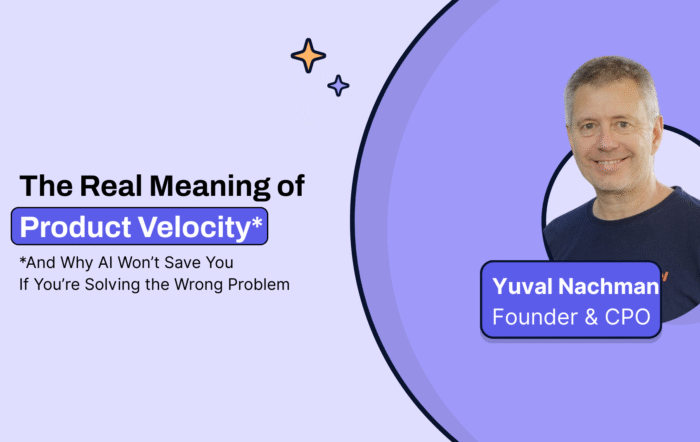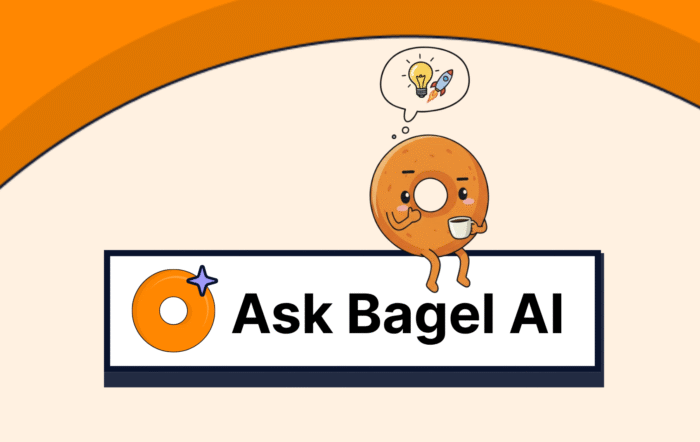B2B product teams have a planning problem. Roadmaps look organized in spreadsheets and slide decks, yet most fail the moment reality changes. Markets move faster than meetings, and customer signals scatter across tools.
Traditional feature roadmaps turn into static relics that measure shipping activity rather than business impact. The new generation of product teams is building outcome-based roadmaps, flexible systems that link product work directly to measurable outcomes such as retention lift, ARR expansion, or churn reduction.
This approach, explained in detail by Product School’s overview of outcome-based product strategy, forms the foundation of what many now call AI Product Intelligence, the ability to connect every feature idea to quantifiable business value through data-driven feedback analysis.
Start with Vision and Measurable Outcomes
A roadmap only matters if it reflects strategy. That begins with a clear product vision connected to measurable goals. Teams should define success as business movement, not output.
For example, “increase enterprise retention rate by 15 percent” or “grow expansion revenue among top-tier accounts by 20 percent.”
These become north stars for roadmap prioritization and decision-making. Resources such as Roman Pichler’s outcome-based roadmap guide detail how to translate broad objectives into product-level outcomes that are testable and measurable.
Organize by Strategic Themes
Rather than listing features, modern B2B teams group roadmap work into strategic themes such as “Customer Retention,” “Expansion Efficiency,” or “Operational Scalability.”
Each theme aligns directly with a measurable outcome and supports clarity across stakeholders.
A practical structure is the Now–Next–Later roadmap. It communicates intent and sequence while avoiding false certainty about delivery dates. This approach is covered in depth in Atlassian’s roadmap best practices and remains a strong foundation for adaptive planning.
Always-On Feedback as a Product Operating System
B2B product management depends on timely signals. Feedback lives everywhere: in CRM notes, support tickets, NPS surveys, and call transcripts yet most teams analyze it quarterly, long after opportunities have decayed.
Always-on feedback systems change that rhythm. They serve as the nervous system of a living roadmap, continuously collecting, categorizing, and weighting customer input by business value.
When product decisions are informed by real-time insight, teams can prioritize initiatives that directly influence renewal rates or pipeline acceleration.
That’s the essence of AI Product Intelligence: connecting fragmented GTM data into a unified source of truth that continuously informs prioritization and ROI tracking.
Bagel AI is purpose-built for this model. It integrates with systems like Salesforce, Gong, Zendesk, and Jira to aggregate signals, surface product gaps, and quantify their revenue impact. By transforming customer data into actionable intelligence, Bagel keeps product strategy synchronized with what actually drives revenue.
Turn Feedback Into Revenue
See how Bagel AI brings real-time product intelligence and impact to every decision.
Linking Roadmap Prioritization to ROI
In traditional planning, product priorities often hinge on anecdotal feedback or internal advocacy. In outcome-driven models, prioritization depends on quantifiable ROI.
Teams use methods like RICE or WSJF not as theoretical frameworks but as living economic models. The RICE framework (Reach × Impact × Confidence ÷ Effort) is effective when evaluating user adoption initiatives.
Meanwhile, WSJF (Cost of Delay ÷ Job Duration) helps when speed of delivery and flow efficiency drive value.
The key is feeding these models with real data: revenue risk, pipeline potential, and retention uplift rather than subjective scoring.
Bagel automates this linkage by associating each product idea with its correlated revenue opportunity, allowing teams to visualize where impact per unit time is highest. This transforms prioritization into a transparent, data-backed process.
| Dimension | Static / Feature Roadmap | Living / Outcome-Based Roadmap |
|---|---|---|
| Purpose | List of features and deadlines | System for continuous business impact |
| Decision Basis | Gut feeling, loudest request | Data-driven insights, ROI linkage |
| Feedback Flow | Periodic surveys or tickets | Always-on feedback from GTM tools |
| Ownership | Product-only responsibility | Shared across Product, Sales, CS |
| Prioritization | Based on effort and deadlines | Based on measurable business outcomes |
| Visibility | Fixed slide deck or spreadsheet | Real-time shared intelligence |
| Change Frequency | Updated quarterly | Continuously evolving |
| Success Metric | Features shipped | Revenue influenced, churn reduced |
| Core Enabler | Manual alignment meetings | AI Product Intelligence (Bagel AI) |
Redefining Product Velocity
In modern B2B organizations, product velocity means more than speed of shipping. It measures how quickly a team converts insight into validated impact.
Velocity improves when the cycle between signal → decision → execution → measurable outcome is short and consistent.
AI-driven feedback systems like Bagel AI compress that cycle by eliminating manual alignment and surfacing insights directly in the tools teams already use.
For example, a fintech company using Bagel connected feature requests from Gong calls to deal blockers in Salesforce, identifying a missing integration that affected $500K in pipeline. Once prioritized, the issue was resolved in weeks and those deals closed.
That is product velocity measured in revenue, not velocity measured in Jira tickets.
Continuous Alignment Across Product and GTM
Alignment fatigue, the endless effort to synchronize GTM and product drains time from every B2B organization.
Bagel AI eliminates most of that friction. The platform distributes updates and insights directly inside the systems where teams already operate. Sales sees which features resolve deal blockers, CS tracks churn-risk themes, and Product sees which initiatives deliver ROI.
This closed feedback loop ensures every team interprets the same data, creating automatic alignment without additional meetings or slide decks.
When product intelligence flows continuously across GTM and product functions, decisions stay synchronized with the latest customer and revenue context.
From Static Plan to Living Roadmap
A living roadmap isn’t a quarterly deliverable. It is a continuous system that senses, adapts, and re-prioritizes as evidence evolves.
Bagel AI turns that principle into practice by connecting always-on feedback with ROI-based prioritization and real-time visibility.
For B2B organizations, this means every feature idea carries proof of value. Roadmaps update themselves with minimal manual effort.
And product velocity becomes measurable through real impact on revenue, retention, and growth, not activity metrics.
Teams that adopt this model don’t plan harder; they plan smarter. They replace alignment exhaustion with actionable insight.
That is the future of AI Product Intelligence, and it’s already happening inside Bagel AI.



